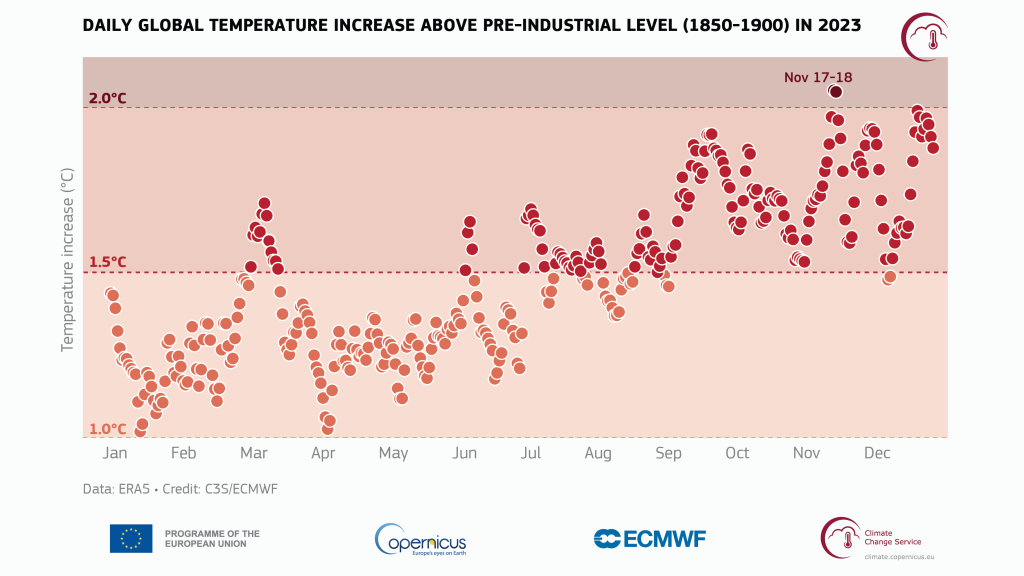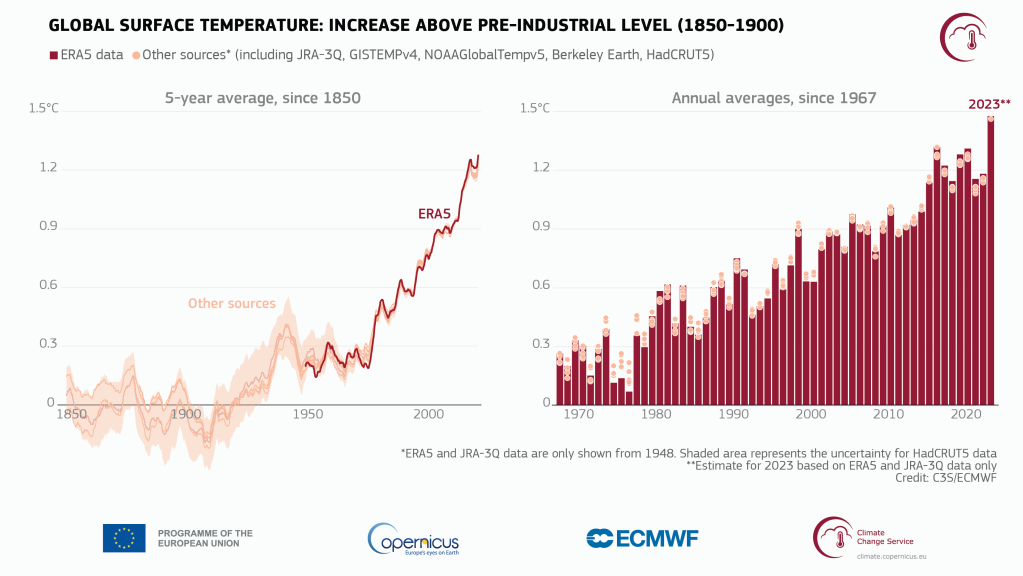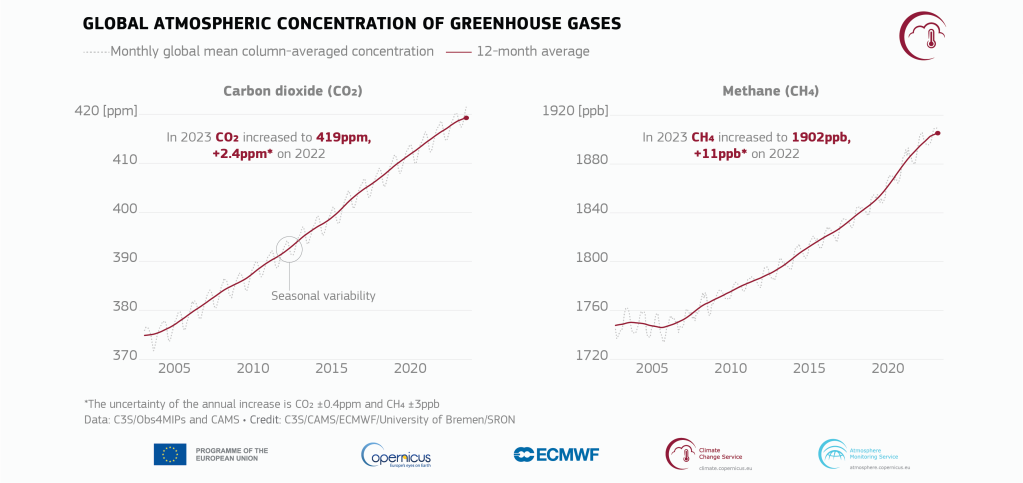
By Anders Lorenzen
It was long expected that 2023 was going to be the warmest year ever recorded since records began. Every month since June 2023 has on a global level been the warmest compared with corresponding months in previous years.
But the extraordinary findings by the European Commission’s (EC) Copernicus Climate Change Service (C3S), unveiled this week, were more significant than perhaps many expected. Not only was it confirmed that last year was the warmest year ever recorded, and quite likely the warmest for the past 100,000 years, but the margin reached was significant.

A league of its own
The satellite data from C3S showed that 2023 was the hottest in global temperature records dating back to 1850. The Director of C3S Carlo Buontempo said: “This has been a very exceptional year, climate-wise… in a league of its own, even when compared to other very warm years.” He explained that, when checked against paleoclimatic data records from sources such as tree rings and air bubbles in glaciers, it was “very likely” the warmest year in the last 100,000 years.

The data demonstrated that on average 2023 was a whole 1.48 degrees Celsius warmer than in the 1850-1900 pre-industrial period, when humans began burning fossil fuels on an industrial scale, pumping carbon dioxide into the atmosphere.
Extraordinarily, the data also showed that the 1.5C target, which all countries agreed to in 2015, had been breached on nearly half of the days in 2023. This sets a depressing precedent for the promises to keep that crucial target alive.

The C3S added, that in 2023 the concentration of CO2 in the atmosphere rose to the highest level ever recorded at 419 PPM. It was also the first year in which every day was more than 1C hotter than pre-industrial times. And for the first time, two days – both in November – were 2C warmer than in the pre-industrial period. During the year as a whole the record was not just broken, but broken by a great amount as 2023 was 0.17C hotter than 2016 – the previous hottest year.
As well as the burning of fossil fuels and other climate-causing human activities such as deforestation, the temperature records in 2023 were also boosted by the El Nino weather phenomenon. This warms the surface waters in the eastern Pacific Ocean and contributes to higher global temperatures.
What’s in store for 2024?
Scientists are uncertain as to whether these records mean we are heading for an even warmer year in 2024. And they do not yet know whether warming will continue to accelerate. The Deputy Director of C3S, Samantha Burgess, explained: “Whether there’s been a phase shift or a tipping point, or it’s an anomalously warm year, we need more time and more scientific studies to understand.”
Across the planet, the record warm year was evidenced in an accelerated wave of extreme weather events, occurring in almost every country around the world.
Categories: climate change, data, EC, science, Weather
1 reply »